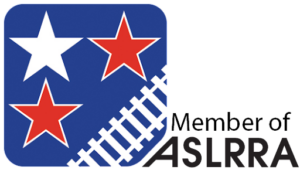When most people picture American railroads, they think of massive freight trains from Class I railroads like Union Pacific, BNSF, or CSX. These giants dominate headlines and move the majority of freight tonnage across the U.S.
But another part of the rail network is just as vital, even though it rarely gets attention: short line railroads. These smaller, regional carriers are the hidden backbone of the supply chain, providing the first and last mile of rail service that keeps goods moving efficiently from small towns to world markets.
In this article, we’ll explore what short line railroads are, why they matter, and the overall challenges and opportunities they face in today’s economy.
What Are Short Line Railroads?
Short line railroads are independent rail carriers that typically operate track segments no longer used by Class I railroads. While Class I’s stretch thousands of miles, short lines usually run 10 to 500 miles of track in local regions.
According to the American Short Line and Regional Railroad Association (ASLRRA), there are roughly 600 short line railroads in the U.S., collectively managing 47,500 route miles, or nearly 29% of the national freight rail network.
They may be small in scale, but their impact is massive. Short lines directly serve about 10,000 customers, often in rural or industrial areas that would otherwise be cut off from the global marketplace.
Why Short Line Railroads Matter
Connecting Rural America to Global Markets
Short lines provide rail access where Class I railroads cannot economically reach. Agricultural producers, lumber mills, grain elevators, and chemical plants rely on these local connections to get products onto the national network and into export markets, otherwise only reachable by truckload.
“Without short lines, a lot of America’s small communities would lose their rail connection entirely. They are literally the bridge between Main Street and the global marketplace.”
~ Chuck Baker, President of ASLRRA
First Mile and Last Mile Service
The first and last mile is often the most difficult part of any supply chain. Short line railroads excel here, picking up raw materials at the source, delivering them to Class I interchanges, and bringing inbound products to local facilities.
Driving Local Jobs and Economic Growth
Short line railroads are more than transportation providers, they are economic drivers. According to ASLRRA, they support over 60,000 jobs nationwide, both directly and indirectly. Many of these jobs are in small towns where employment opportunities are limited.
In addition, manufacturers often choose plant or warehouse locations based on the availability of reliable short line service.
Environmental Benefits of Short Lines
Rail is undoubtedly the most fuel-efficient land freight option, moving one ton of goods over 480 miles on a single gallon of fuel (Association of American Railroads). Henceforth, by reducing truck miles on highways, short lines help cut carbon emissions, reduce congestion, and extend road life.
Safety and Reliability in Short Line Railroads
Despite their size, short line railroads must meet the same federal safety standards as larger railroads. Challenges may include aging infrastructure, smaller budgets for upgrades, and operations in remote areas.
Yet short lines frequently maintain strong safety records, mostly due to smaller train sizes, lower speeds, and strong community ties.
A regional short line operator in the Midwest was once quoted saying “Safety is non-negotiable. Short lines may be small, but they live and die by their reputation in the communities they serve.”
Real-World Examples of Short Line Railroads at Work
Grain Belt Express – Midwest Agriculture
Short lines in the Midwest move corn, soybeans, and wheat from farms to Class I connections. Without them, farmers would otherwise face higher costs trucking grain hundreds of miles to market.
Energy and Chemicals – Gulf Coast
In Texas and Louisiana, short lines link chemical plants and refineries to the national rail network. This ensures hazardous materials are transported under strict compliance while reducing truck congestion on highways.
Revitalizing a Rust Belt Town – Pennsylvania
One short line revived a struggling steel town by serving a new metal recycling facility. Reliable rail service was a deciding factor in the investment, bringing hundreds of jobs back to the community.
Challenges Facing Short Line Railroads
Infrastructure Funding
Maintaining track, bridges, and locomotives is capital-intensive. With smaller revenue streams, many short lines depend on programs like CRISI grants and the 45G Tax Credit to reinvest in infrastructure.
Competing with Trucking
Truck shipping is often faster and more flexible. Short lines must compete by offering cost-effective, reliable service while emphasizing their environmental advantages.
Regulatory Compliance
Short lines face the same FRA and OSHA regulations as Class I carriers and compliance requires significant investment in training, inspections, and reporting. However, finding the resources to manage all of this is much harder for small railroads to do.
Technology Shaping the Future of Short Lines
Even the smallest railroads are adopting new technology, including:
- GPS and telematics for real-time tracking
- Automated track inspections with drones and sensors
- Fuel-efficient locomotives with cleaner engines
- Digital customer portals for better visibility and scheduling
Policy Support and Industry Advocacy
The federal government has recognized the importance of short lines. The Short Line Railroad Rehabilitation and Investment Act (45G Tax Credit), made permanent in 2020, provides critical support for track maintenance.
Organizations like ASLRRA continue to push for funding, safety programs, and infrastructure development, ensuring short lines remain a vital part of the logistics system.
Conclusion: Small but Mighty in the U.S. Supply Chain
Short line railroads may operate on shorter tracks, but their impact is far-reaching. They:
- Keep rural America connected
- Support tens of thousands of jobs
- Move billions of dollars in goods every year
- Reduce carbon emissions and congestion
- Serve as the economic lifeblood of small communities
As supply chains grow undeniably more complex, the role of short line railroads will only become more important. Supporting their infrastructure, ensuring their safety, and recognizing their contribution isn’t just smart transportation policy, it’s essential for America’s economic security.
Sources
- American Short Line and Regional Railroad Association (ASLRRA), www.aslrra.org
- Association of American Railroads (AAR), www.aar.org
- Federal Railroad Administration (FRA), www.fra.dot.gov
- Congressional Research Service – “Short Line Railroads and the U.S. Freight Rail System” (2021)
- U.S. Department of Transportation – CRISI Grant Program

Cameron Defebaugh
Director, Operations




Leave a Reply